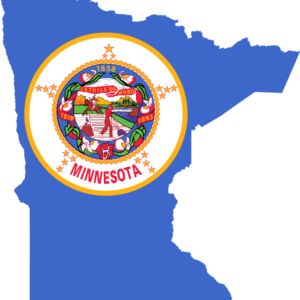Minnesota marks more alternative fuel milestones in 2018

December 19, 2018
BY The American Lung Association in Minnesota
The state that led the region in the growth and use of alternative fuels last year set even higher milestones in 2018, according to the American Lung Association in Minnesota. This year, Minnesota became the first state in the country to have more than 400 public and private E85 stations. E85 is a cleaner-burning, ethanol-based fuel that can be used in flex-fuel vehicles designed to run on either gasoline or on ethanol blends. In 2018, 46 new E85 stations opened throughout Minnesota, bringing the total number of public and private stations to 411.
The U.S. DOE’s Alternative Fuels Data Center lists 1,171 public and private alternative fuel stations located in Minnesota, compared to 818 in Wisconsin, 588 in Iowa, 173 in South Dakota and 91 in North Dakota. The alternative fuels sold in the state include ethanol, biodiesel, electric vehicle charging stations, propane fueling stations and compressed natural gas (CNG).
Advertisement
Another clean fuel milestone occurred in May 2018, when Minnesota became the first state in the country to require virtually all of the diesel sold in warm-weather months to contain a 20 percent biodiesel blend. During the winter months, Minnesota stations sell a 5 percent biodiesel blend.
The number of electric vehicles and charging stations in the state continued to steadily rise in 2018. There are an estimated 6,000 electric vehicles on Minnesota roads, with 293 public charging stations. Electric-powered commuter buses recently became a reality in Minnesota, with plug-in buses either in service or on order for the communities of the Twin Cities, Duluth, and Rochester.
Advertisement
The number of Minnesota stations offering the new 88 octane gasoline had another boost in 2018, reaching 312 outlets. The high-octane fuel, sometimes referred to as E15, consists of 85 percent gasoline and 15 percent ethanol. Approved by the U.S. EPA for use in vehicles 2001 or newer, E15 is the fastest growing new fuel in the state, with 61 new stations opening in Minnesota in 2018 alone.
The American Lung Association in Minnesota coordinates Twin Cities Clean Cities Coalition, a statewide alternative fuel program that is one of the sub-awardees of a $4.9 million, three-year DOE grant to promote the use of alternative fuels on I-94 from Moorhead, Minnesota, to Port Huron, Michigan. Twin Cities Clean Cities Coalition also has its own DOE grant project to promote electric vehicles in the Midwest, Midwest EVOLVE. For more on the alternative fuel choices available in Minnesota, visit CleanAirChoice.org.
Related Stories
A small but increasing amount of biodiesel in the United States is consumed in the residential, commercial, and electric power sectors, according to new estimates now published in the U.S. EIA’s State Energy Data System.
IAG and Microsoft are extending their 2023 co-funded purchase agreement for SAF by five years. The SAF used under the agreement will be produced by Phillips 66’s Humberside refinery and LanzaJet’s facility in the U.S.
Neste and DB Schenker, a logistics service provider, have collaborated to work towards expanding DB Schenker’s adoption of Neste MY Renewable Diesel in Asia-Pacific. DB Schenker trialed the fuel from December 2024 to February 2025 in Singapore.
Effective April 1, Illinois’ biodiesel blend requirements have increased from B14 to B17. The increase was implemented via a bipartisan bill passed in 2022, according to the Iowa Soybean Association.
Airbus is taking a significant step toward scaling the adoption of sustainable aviation fuel (SAF) by testing a new “Book and Claim” approach. This initiative aims to boost both supply and demand for SAF worldwide.
Upcoming Events










